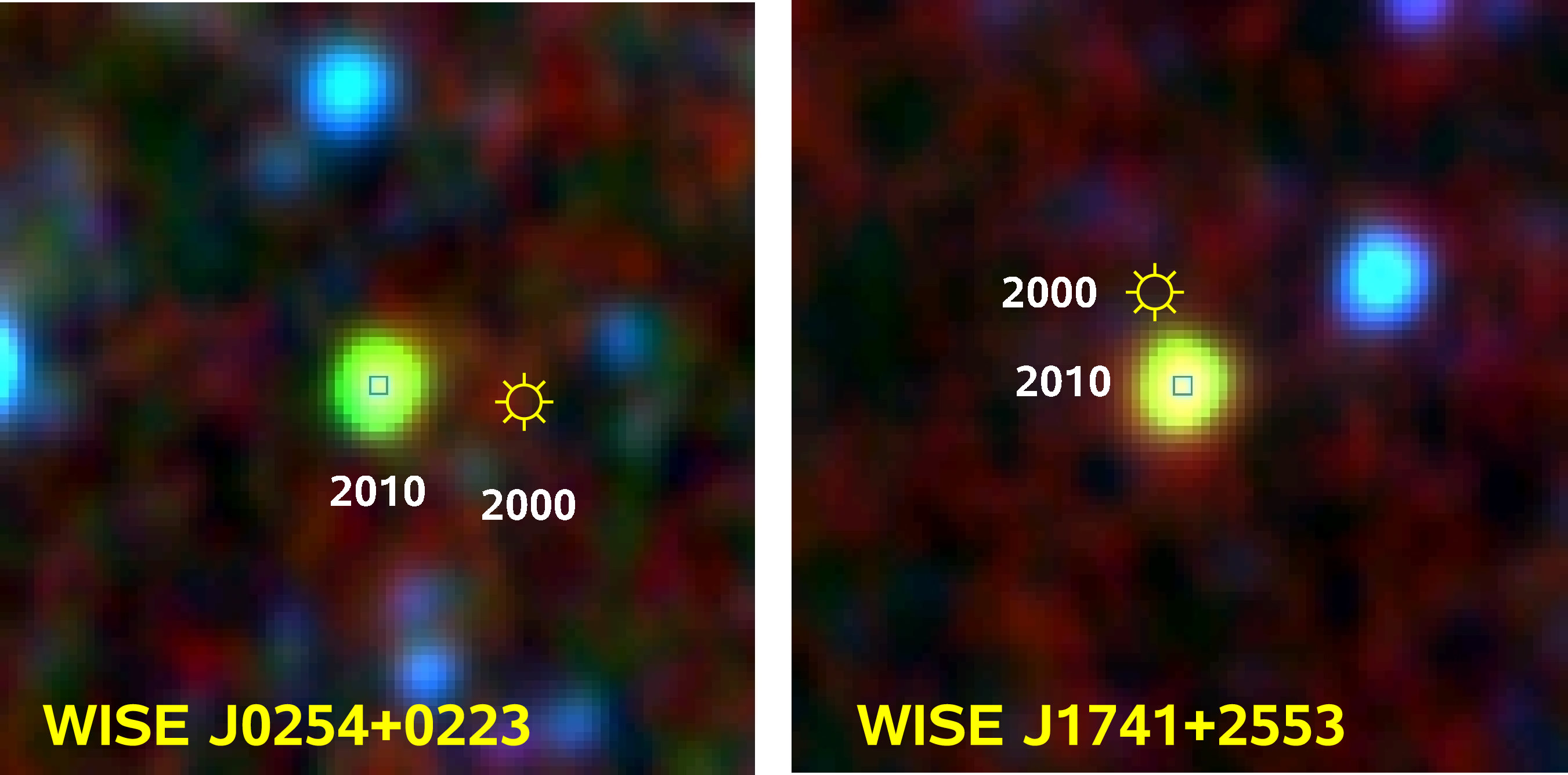[/caption]
When it comes to being close to “home”, there are not a lot of stars out there in our general neighborhood. Proxima Centauri is 4.2 light years away and Rigil Kentaurus is 4.3. There’s Barnard’s Star, Wolf 359, Lalande 21185, Luyten 726-8A and B and big, bright Sirius A and B. But what about a celestial neighbor that’s not quite so prominent? Try a pair of newly discovered brown dwarfs.
Scientists from the Leibniz Institute for Astrophysics Potsdam (AIP) using the NASA satellite WISE (Wide-field Infrared Survey Explorer) have discovered this unlikely duo just 15 and 18 light years from our solar system. “We have used the preliminary data release from WISE, selected bright candidates with colours typical of late-T dwarfs, tried to match them with faint 2MASS and SDSS objects, to determine their proper motions, and to follow-up them spectroscopically.” says RD Scholz, et al.
Named WISE J0254+0223 and WISE J1741+2553, the pair drew attention to themselves by their very disparity – one very bright in infrared and the other very faint in optical light. Even more attractive was the speed at which they’re moving – the proper motion changing drastically between observations. “The very large proper motions are a first hint that these objects should be very close to the Sun. Both objects are only detected in the SDSS z-band which is typical of nearby late-T dwarfs.” says Scholz.
Because the pair were optically visible at the time of the discovery, the team employed the Large Binocular Telescope (LBT) in Arizona to determine their spectral type and home in more accurately on their distance. They wanted to know more about the coolest representatives of T-type brown dwarf – the ultra-cool ones. Better known as failed stars because they lacked the mass to ignite nuclear fusion, the duo required study because their magnitude decreases sharply with time. Because they fade so quickly, there’s a strong possibility of a brown dwarf being much closer than we realize.
Like maybe next door…
Original News Source: Leibniz Institute for Astrophysics Potsdam News. For further reading: Cornell University Library – Two very nearby (d ~ 5 pc) ultracool brown dwarfs detected by their large proper motions from WISE, 2MASS, and SDSS data.


“Like maybe next door….”
I hate to be “that guy” but that’s just begging for some Nibiru nuts to come in here and shoot their mouths off.
I’m not a Nibiru nut but that was the first thing that came to my mind?
We’re doomed! That elf-star is gonna fairy dust us to oblivion! It’s gonna be here Dec 20, 2012. One day before we all are expecting it…to surprise us…
LOL 😀
Yo Tammy, at the second paragraph, second line, there should be two L’s in unlikely.
where would i be without ‘cha, baby? 😉
Hi Tammy,
I love your articles. Just a quick correction…. In your first line you say “there’s not a lot of stars”. This should be “there are not a lot of stars”.
-J
Oh, smeg! How the smeging hell did I miss that one?
blush… 😉
very cool,cant wait till we find planets around brown dwarf,wonder what types of planets would be found.
Just a little (a lot) closer….
I would love that you add the distances to this article since this article is already being misused by 2012 domesdayers as proof that scientists have evidence that it is in the solar system.
The article shows 5.5 and 4.9 pc distances, basically that is about 17 light-years away.
Very dark and cold I’d imagine…unless there was a larger parent star that the brown dwarf simply formed a binary with.